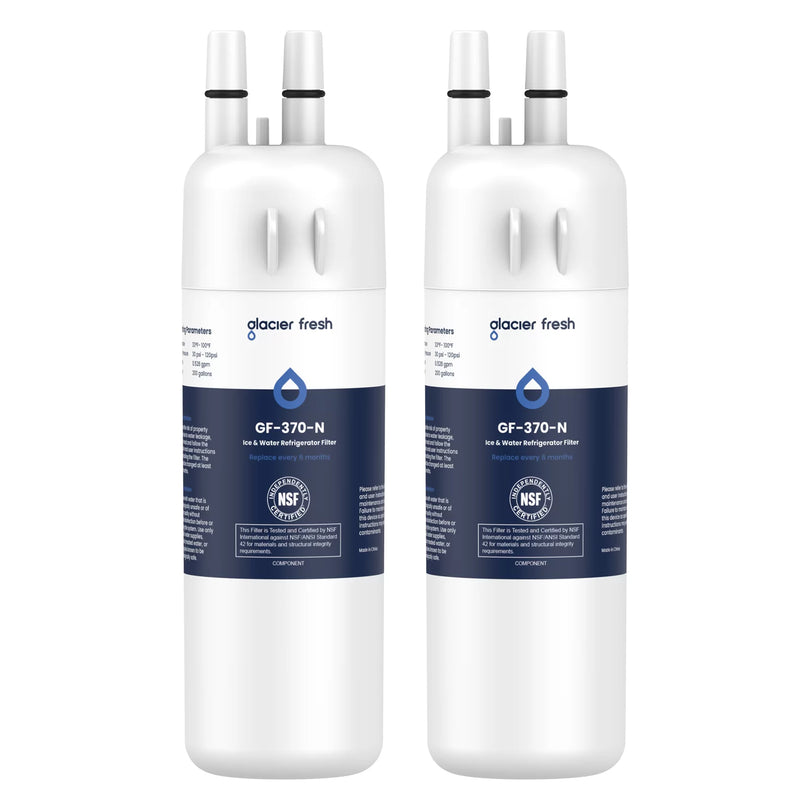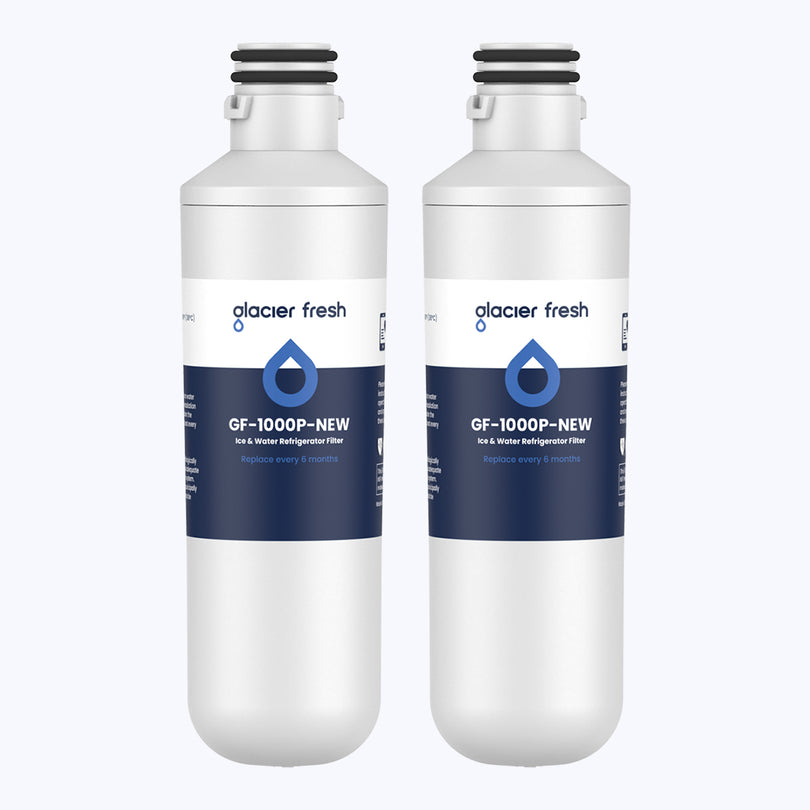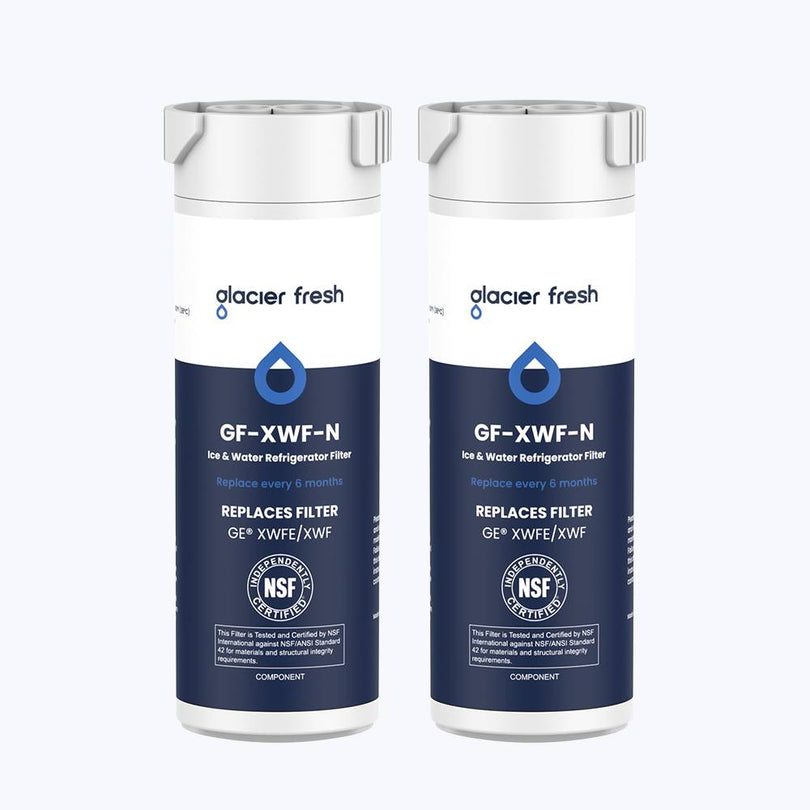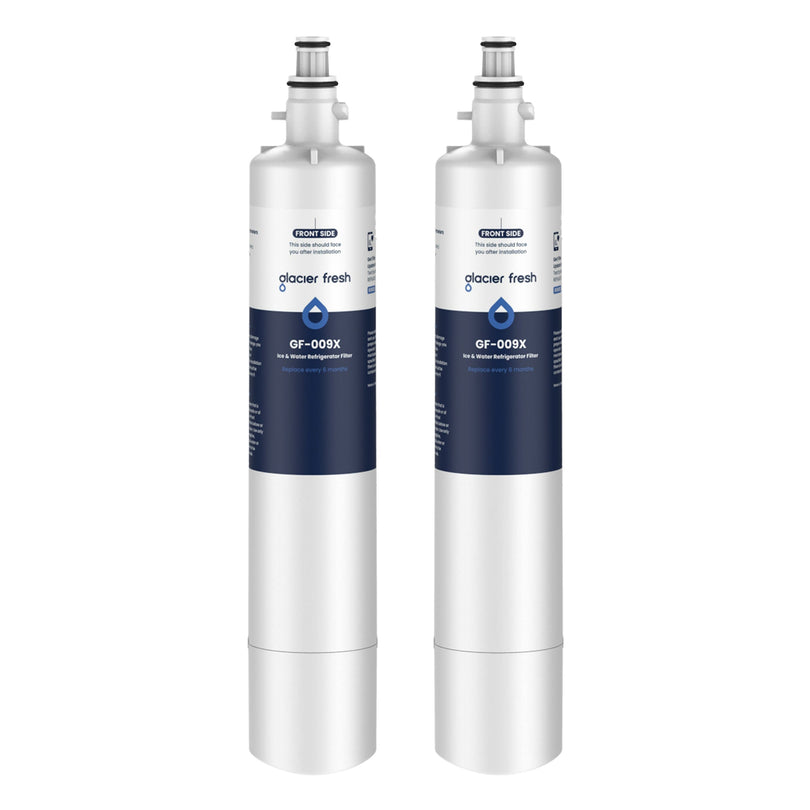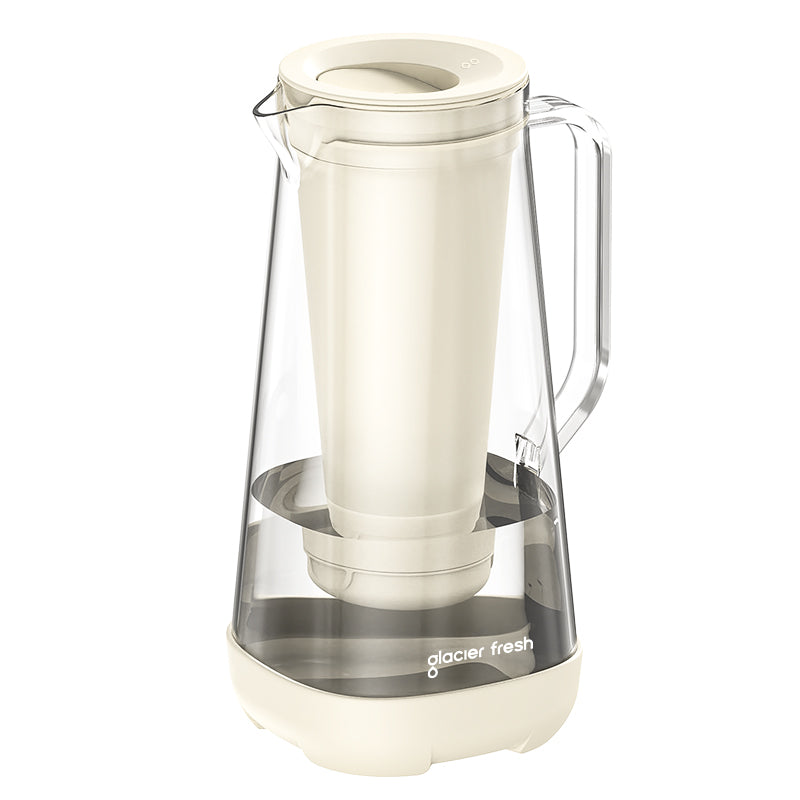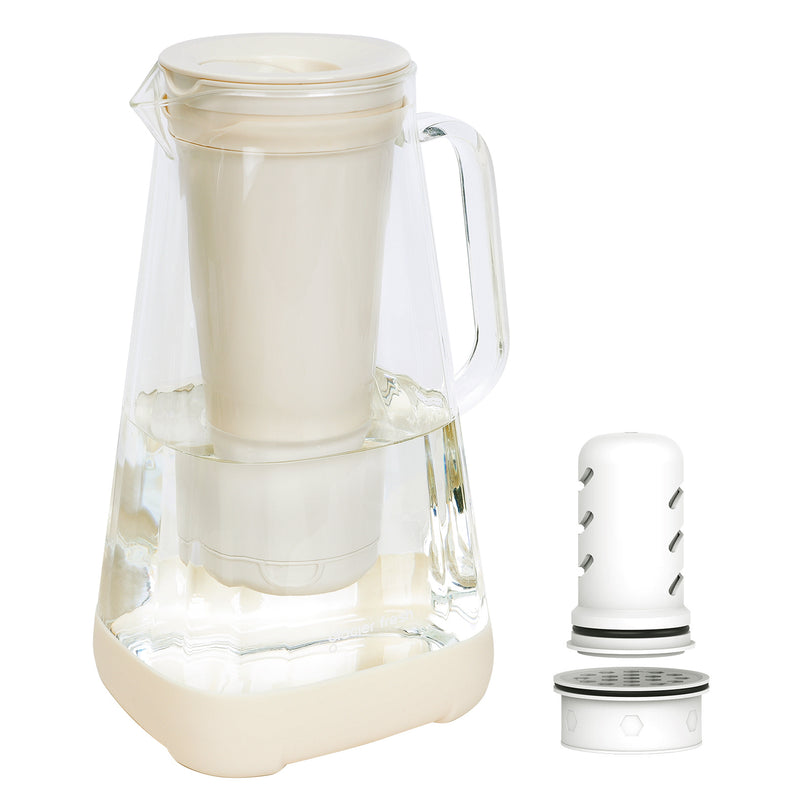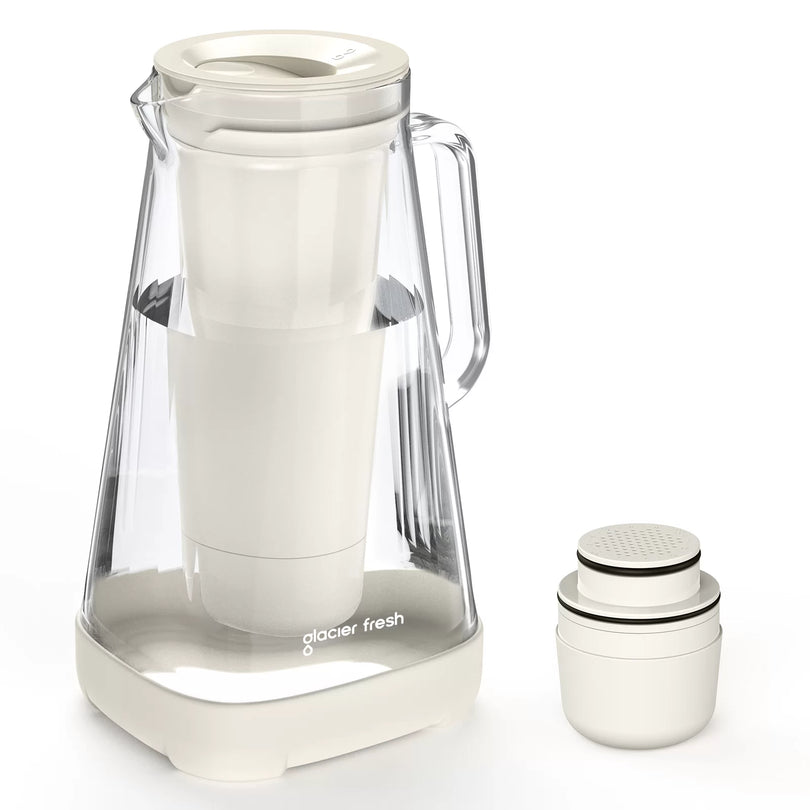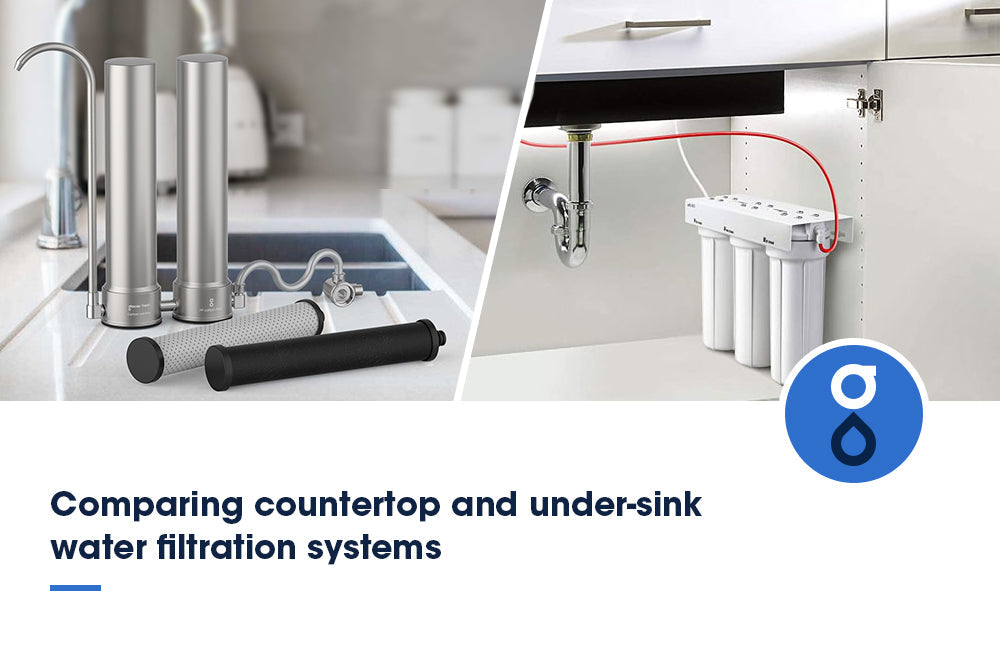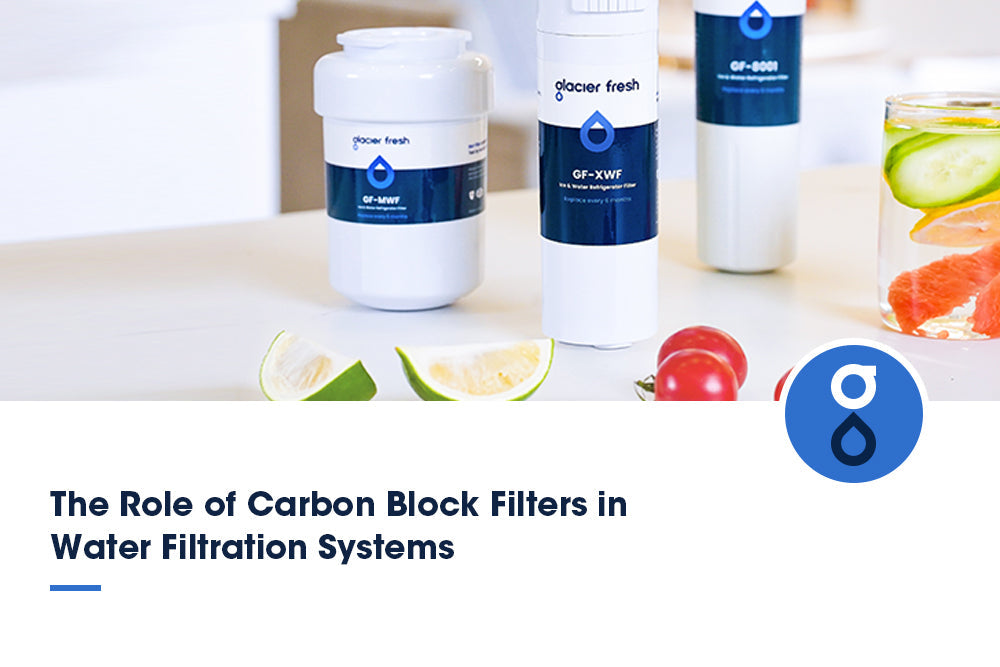Table of Contents:
Alles über Wasserfilter für die Arbeitsplatte
Was Sie über Untertisch-Wasserfilter wissen müssen
Vor- und Nachteile von Wasserfiltern für die Arbeitsplatte
Vor- und Nachteile von Untertisch-Wasserfiltern
Wasserfilter für die Arbeitsplatte oder unter der Spüle: die wichtigsten Unterschiede
Wasserfilter für die Arbeitsplatte oder unter der Spüle: Wer gewinnt?
FAQs
Abschluss
Sie möchten die Wasserqualität in Ihrem Zuhause verbessern, sind aber hin- und hergerissen zwischen einem Auftisch- oder einem Untertisch-Wasserfiltersystem. Das ist ein häufiges Dilemma. Beide haben ihre Stärken und Schwächen, und manchmal muss geklärt werden, welches am besten zu Ihren Bedürfnissen passt. Keine Sorge, dieser Artikel hilft Ihnen dabei. Wir gehen auf die Feinheiten beider Optionen ein und vergleichen ihre Vor- und Nachteile, damit Sie eine fundierte Entscheidung treffen können. Egal, ob Sie die Bequemlichkeit eines Auftischmodells oder die Unauffälligkeit eines Untertischsystems bevorzugen – wir haben die Lösung für Sie. Also, los geht‘s: Finden Sie das perfekte Filtersystem für Ihr Zuhause!
Alles über Wasserfilter für die Arbeitsplatte
Was sind Auftisch-Wasserfilter?
Ein Wasserfilter für die Arbeitsplatte ist ein kompaktes Gerät für Ihre Küchentheke und dient zur Reinigung Ihres Leitungswassers. Es filtert Verunreinigungen aus Ihrem Wasser und sorgt so für besseren Geschmack und Reinheit. Die Installation eines Auftisch-Wasserfilters ist einfach und erfordert weder Spezialwerkzeug noch Klempnerkenntnisse. Auch die Wartung ist unkompliziert, da Sie die Filterkartusche regelmäßig austauschen müssen.
Wie funktionieren Auftisch-Wasserfilter?
Sie fragen sich wahrscheinlich, wie diese kleinen Wasserspender funktionieren. Nun, es ist weniger Magie als vielmehr Wissenschaft. Das Wasser aus Ihrem Wasserhahn fließt in den Filter, wo unerwünschte Schadstoffe zurückgehalten werden, und sauberes Wasser wird durch einen anderen Auslass abgegeben. Die Komplexität der Filterwartung variiert je nach Modell. Einige erfordern einen regelmäßigen Filterwechsel, was den Wartungsaufwand erhöht. Bei einigen Modellen kann die Installation schwierig sein, insbesondere wenn Ihr Wasserhahn kompatibel sein muss. Aber keine Sorge; die meisten Hersteller bieten Adapter für verschiedene Wasserhahntypen an. Ein Kostenvergleich mit Untertischfiltern kann aufgrund der relativ geringen Anschaffungs- und Wartungskosten für diese Auftischversionen sprechen.
Arten von Wasserfiltern für die Arbeitsplatte
Wasserfilter für die Arbeitsplatte gibt es in verschiedenen Ausführungen. Sie bieten eine bequeme und effektive Möglichkeit, sauberes und sicheres Trinkwasser zu gewährleisten. Es gibt drei Haupttypen von Wasserfiltern für die Arbeitsplatte: Kohlefilter, Umkehrosmoseanlagen und Ionenaustauscherharzfilter.
Kohlefilter sind die gängigste Art von Wasserfiltern für die Arbeitsplatte. Sie verwenden Aktivkohle, um Verunreinigungen zu entfernen und Geschmack und Geruch des Wassers zu verbessern. Diese Filter fangen Schadstoffe in den kleinen Hohlräumen des Kohleblocks ein und entfernen so effektiv Chlor, Sedimente und bestimmte Chemikalien. Umkehrosmoseanlagen sind eine fortschrittlichere Filteroption. Sie verwenden einen mehrstufigen Prozess, um viele Verunreinigungen wie Bakterien, Viren, Schwermetalle und gelöste Feststoffe zu entfernen. Ionenaustauscherharzfilter sind darauf ausgelegt, bestimmte Verunreinigungen wie Schwermetalle und bestimmte Chemikalien zu entfernen. Während Wasserfilter für die Arbeitsplatte ausreichend sind, können Wasserfilterkannen und Wasserhahnfilter bieten zusätzliche Vorteile. Wasserfilterkannen sind tragbar und können bequem im Kühlschrank aufbewahrt werden.
Was Sie über Untertisch-Wasserfilter wissen müssen
Was sind Untertisch-Wasserfilter?
Untertisch-Umkehrosmoseanlagen sind kompakte Einheiten, die direkt in die Wasserleitung unter Ihrer Küchenspüle eingebaut werden. Diese Systeme bieten eine nahtlose Möglichkeit, Ihr Trink- und Kochwasser zu reinigen, ohne wertvollen Platz auf der Arbeitsfläche zu verschwenden. Die Filterinstallation ist in der Regel einfach und kann von geschickten Hausbesitzern oft selbst durchgeführt werden. Allerdings müssen Sie den Filter regelmäßig wechseln. Die Filterlebensdauer variiert je nach Modell und Nutzung. Beachten Sie, dass ein Filterwechsel mit der Zeit die Gesamtwartungskosten erhöhen kann. Die Gewissheit von sauberem, sicherem Trinkwasser kann sich jedoch lohnen.
Wie funktionieren Untertisch-Wasserfilter?
Neugierig auf die Funktionsweise dieser kompakten Wasserreiniger? Lassen Sie uns die Details genauer betrachten und herausfinden, wie Untertischfilter funktionieren, um Ihnen reines, sicheres Wasser direkt aus dem Wasserhahn zu liefern.
Verunreinigungen werden im Inneren des Systems aufgefangen und entfernt, während das Wasser durch die Filterstufen fließt. Aufgrund der komplexen Installation werden diese Geräte meist unter der Spüle platziert. Doch keine Sorge: Die Filterwartung ist trotz der versteckten Lage ein Kinderspiel. Je nach Modell und Wasserverbrauch müssen die Kartuschen regelmäßig ausgetauscht werden. Die Kosten variieren. Manche Untertischfilter sind zwar teurer als ihre Gegenstücke für die Arbeitsplatte, bieten aber oft eine bessere Filterleistung.
Vor- und Nachteile von Wasserfiltern für die Arbeitsplatte
Einer der größten Vorteile von Auftischfiltern ist ihre lange Lebensdauer. Diese Modelle filtern oft mehrere Tausend Gallonen, bevor sie ausgetauscht werden müssen, was sie langfristig zu einer kostengünstigen Wahl macht. Außerdem sind sie für ihre unkomplizierte Installation bekannt. Sie benötigen weder einen Klempner noch spezielles Werkzeug, was die Installation unkompliziert und sogar unterhaltsam macht, wenn Sie gerne selbst Hand anlegen. Auftischmodelle haben jedoch ihre Grenzen. Filterwechsel sind zwar selten, aber die Wartungskosten können hoch sein. Außerdem belegen diese Systeme Ihre Arbeitsfläche, was bei begrenztem Platz in der Küche von Vorteil sein kann.
Vor- und Nachteile von Untertisch-Wasserfiltern
Untertisch-Wasserfilter bieten im Vergleich zu anderen Filtersystemen verschiedene Vor- und Nachteile. Ein Hauptvorteil von Untertisch-Wasserfiltern ist ihre kompakte Größe, die eine bequeme Installation unter der Küchenspüle ermöglicht. Dies spart wertvollen Platz auf der Arbeitsfläche und macht Untertisch-Wasserfilter zur bevorzugten Wahl für alle, die nur wenig Platz auf der Arbeitsfläche haben.
Ein weiterer Vorteil von Untertischfiltern ist ihre Fähigkeit, komplexe Wasserqualitätsprobleme zu lösen. Diese Filter bestehen oft aus mehreren Filterstufen, darunter Sedimentfilter, Kohlefilter und Ionenaustauscherharz. Dieser mehrstufige Filterprozess entfernt effektiv schädliche Verunreinigungen, schlechten Geschmack und Geruch aus dem Wasser und sorgt für sauberes und wohlschmeckendes Wasser zum Trinken und Kochen.
Allerdings sind auch einige Nachteile zu berücksichtigen:
- Untertischfilter müssen in der Regel fachmännisch installiert werden, was die Gesamtkosten erhöhen kann.
- Diese Filter sind nicht tragbar und können nicht von einem Ort zum anderen bewegt werden, wie z. B. Auftischfilter oder Wasserfilterkannen. Bei der Auswahl eines Untertisch-Wasserfilters sollten Größe und Platzbeschränkungen berücksichtigt werden. Um die Kompatibilität mit dem ausgewählten Filtermodell sicherzustellen, ist es wichtig, den Platz unter der Spüle auszumessen.
- Berücksichtigen Sie die Kapazität und den Wartungsbedarf des Filters, einschließlich der Kosten für Filteraustausch und -wartung.
Wasserfilter für die Arbeitsplatte oder unter der Spüle: die wichtigsten Unterschiede
Installation und Platzbedarf
In Bezug auf Installation und Platzbedarf ist der Auftisch-Wasserfilter ein elegantes, kompaktes Accessoire auf Ihrer Küchentheke, während der Untertisch-Wasserfilter wie eine Geheimwaffe ordentlich unter Ihrer Spüle versteckt ist. Der Auftisch-Wasserfilter ist ein eigenständiges Gerät, das ohne Änderungen an den Rohrleitungen einfach installiert werden kann. Er wird einfach an Ihren vorhandenen Wasserhahn angeschlossen und ist somit eine praktische Option für alle, die sich komplexe Installationen ersparen möchten.
Platzsparend: Der Untertisch-Wasserfilter benötigt nur minimalen Platz auf der Arbeitsfläche und ermöglicht so einfachen Zugang zu gefiltertem Wasser, ohne wertvolle Arbeitsfläche zu opfern. Die Installation des Untertisch-Wasserfilters erfordert hingegen etwas mehr Aufwand. Er muss an Ihr bestehendes Wasserleitungssystem angeschlossen werden, wofür Sie möglicherweise professionelle Hilfe benötigen. Nach der Installation bleibt er jedoch unsichtbar und nimmt keinen Platz auf der Arbeitsfläche ein, was Ihrer Küche ein saubereres und übersichtlicheres Aussehen verleiht.
Filtrationskapazität und -effizienz
Beim Vergleich von Auftisch- und Untertisch-Wasserfiltern ist es wichtig, deren Filterkapazität und Effizienz zu berücksichtigen. Auftischfilter haben in der Regel eine geringere Filterkapazität als Untertischfilter. Sie sind darauf ausgelegt, jeweils eine kleinere Wassermenge zu filtern und eignen sich daher für Einzelpersonen oder kleine Haushalte. Untertischfilter hingegen haben eine höhere Filterkapazität und können eine größere Wassermenge filtern. Das macht sie ideal für Familien oder Haushalte mit höherem Wasserverbrauch.
Untertischfilter verfügen häufig über mehrere Filterstufen, darunter Aktivkohle- und Sedimentfilter, um verschiedene Verunreinigungen effektiv zu entfernen. Auftischfilter verfügen möglicherweise über weniger Filterstufen, was ihre Gesamteffizienz bei der Entfernung von Verunreinigungen aus dem Wasser beeinträchtigen kann.
Wartung und Filterwechsel
Auftisch-Wasserfilter verfügen in der Regel über eine einzelne Filterkartusche, die alle paar Monate ausgetauscht werden muss. Der Austausch ist in der Regel einfach und kann vom Benutzer selbst ohne professionelle Hilfe durchgeführt werden. Untertisch-Wasserfilter hingegen verfügen oft über mehrere Filterstufen, für die unterschiedliche Kartuschentypen erforderlich sein können.
Die Wartung und der Austausch von Untertischfiltern können komplexer sein und erfordern technisches Wissen. Darüber hinaus werden Untertischfilter in der Regel unter der Spüle installiert, was den Zugang und Austausch im Vergleich zu Auftischfiltern schwieriger machen kann.
Wasserdurchfluss und Ausgabeoptionen
Der Wasserdurchfluss und die Dosiermöglichkeiten variieren bei beiden Filtersystemen. Auftisch-Wasserfilter haben in der Regel eine geringere Durchflussrate als Untertisch-Filter. Dies liegt daran, dass Auftisch-Filter in der Regel durch Schwerkraft gespeist werden und das Wasser durch die Schwerkraft filtern. Untertisch-Filter hingegen sind direkt an die Wasserversorgung angeschlossen und haben eine höhere Durchflussrate.
Das bedeutet, dass Untertischfilter einen schnelleren und gleichmäßigeren Durchfluss von gefiltertem Wasser ermöglichen. Darüber hinaus verfügen Auftischfilter in der Regel über eine einzige Ausgabemöglichkeit und einen separaten Wasserhahn auf der Arbeitsplatte. Untertischfilter hingegen können an den vorhandenen Wasserhahn angeschlossen werden und bieten so eine bequemere und vielseitigere Ausgabemöglichkeit.
Kosten und langfristige Investition
Sparen Sie langfristig Geld, indem Sie die Kosten und die langfristige Investition dieser Filtersysteme berücksichtigen. Der Preis ist ein wesentlicher Faktor beim Vergleich von Auftisch- und Untertisch-Wasserfiltern. Auftischfilter sind in der Regel günstiger und kosten zwischen 50 und 200 US-Dollar. Untertischfilter hingegen sind in der Regel teurer und kosten zwischen 200 und 1000 US-Dollar. Es ist jedoch wichtig, über die Anschaffungskosten hinaus auch die langfristige Investition zu berücksichtigen.
Auftischfilter müssen in der Regel häufig ausgetauscht werden, was sich mit der Zeit summieren kann. Untertischfilter hingegen sind in der Regel langlebiger und müssen nur alle 6–12 Monate ausgetauscht werden. Daher sind Untertischfilter zwar möglicherweise teurer, ihre langfristige Investition kann sich jedoch lohnen.
Wasserfilter für die Arbeitsplatte oder unter der Spüle: Wer gewinnt?
Sind Sie bereit, in diesem Vergleich zwischen zwei Filtertypen einen Sieger zu küren? Die Sache ist komplexer. Ihre Wahl zwischen Auftisch- und Untertisch-Wasserfiltern hängt weitgehend von Ihren Bedürfnissen und Umständen ab. Was die Installationskosten betrifft, erfordern Untertischfilter oft professionelle Hilfe, was die Anschaffungskosten erhöht. Auftischfilter hingegen sind in der Regel einfach zu installieren, sodass Sie diese zusätzlichen Kosten sparen. Kommen wir nun zur Wartungshäufigkeit. Auftischfilter müssen im Allgemeinen häufiger ausgetauscht werden als Untertischfilter.
Sie sind zwar günstiger in der Installation, können aber auf lange Sicht teurer sein. Was die Filterlebensdauer betrifft, haben Untertischfilter aufgrund ihrer größeren Größe und Kapazität in der Regel eine längere Lebensdauer. Das bedeutet, dass sie seltener ausgetauscht werden müssen und Sie langfristig möglicherweise mehr sparen. Letztendlich hängt alles davon ab, was am besten zu Ihnen passt. Wenn Sie Wert auf niedrige Anschaffungskosten und eine einfache Installation legen, könnte ein Auftischfilter die bessere Wahl sein. Wenn Sie jedoch eine längere Lebensdauer und weniger häufige Wartung bevorzugen, könnte der Untertischfilter die beste Wahl sein. Sie haben die Entscheidung; wählen Sie mit Bedacht.
FAQs
Können Auftisch- und Untertischfilter mit anderen Wasserreinigungsmethoden verwendet werden?
Ja, sowohl Auftisch- als auch Untertischfilter können mit anderen Wasseraufbereitungsmethoden verwendet werden. Berücksichtigen Sie bei der Kombination verschiedener Wasseraufbereitungssysteme die Filterkompatibilität, den Kostenvergleich und die Umweltauswirkungen, um optimale Ergebnisse zu erzielen.
Welche Standardtipps zur Wartung und Fehlerbehebung gibt es für beide Filtertypen?
Tauschen Sie die Filter regelmäßig gemäß den Herstellerangaben aus. Halten Sie sie sauber, indem Sie die angegebenen Reinigungsverfahren befolgen. Nutzen Sie bei Problemen die Anleitung zur Fehlerbehebung. Denken Sie daran, dass Wartung für eine optimale Leistung entscheidend ist.
Sind mit der Verwendung dieser Wasserfiltersysteme gesundheitliche Risiken verbunden?
Nein, es bestehen keine nennenswerten Gesundheitsrisiken. Filterbedingte Erkrankungen können jedoch auftreten, wenn die Filter nicht ordnungsgemäß gewechselt werden. Materialtoxizität ist selten, aber möglich. Auch eine bakterielle Kontamination kann bei unsachgemäßer Wartung auftreten.
Abschluss
Letztendlich kommt es auf Ihre Bedürfnisse und Vorlieben an. Ein Auftisch-Wasserfilter ist die beste Wahl, wenn Ihnen Komfort und Mobilität wichtig sind. Wünschen Sie sich eine robustere Filterung und ist die Installation kein Problem, entscheiden Sie sich für ein Untertischmodell. Denken Sie daran: Sauberes und sicheres Wasser ist für Sie und Ihre Familie unerlässlich.

